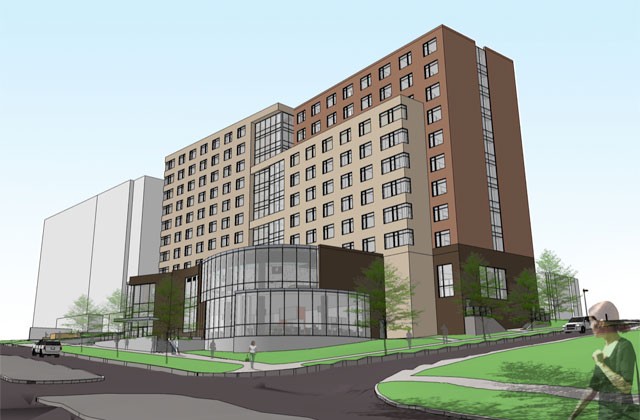We'd like your input - recent projects, photo/s, renderings, and expert insight - on an important article we're working on for our Jan 2013 issue:
HIGHER EDUCATION: Residence Halls, Student Unions, and ‘Quality of Life’ Factors in the Halls of Ivy
With total costs exceeding $50,000 at many colleges/universities, and with U.S. student debt nearing $1 trillion, will institutions be forced to cut back on "quality of campus life" buildings: residence halls that rival the Ritz, student unions and refectories that go well beyond the basics of bed and board, recreation centers that may seem over the top in their amenities? What about other "quality of campus life" buildings?
We're not talking about basic classroom, science & technology, or administrative buildings here. We're interested in those structures that are not, strictly speaking, essential to the curriculum or administration of the institution - those facilities that serve to enhance the "quality of campus life."
The essential question: Have colleges and universities gone too far with these structures? Or does competition for top students, institutional pride, or some other factor make it essential that institutions of higher learning keep raising the bar? And who's going to pay for these facilities?
Please send project information, PDFs, photo/s, renderings, and related information to our Contributing Editor, Susan Bady (susanbady@sbcglobal.net).
Please also let Susan know the name and contact info (email, phone, office location) of your top expert on higher-ed facilities.
Deadline: Due to the Thanksgiving holiday, we'd like to get these materials by Friday, Nov 16, if possible.
Thanks for your help, and BD+C looks forward to working with you on this important article. +
Related Stories
| May 25, 2011
Developers push Manhattan office construction
Manhattan developers are planning the city's biggest decade of office construction since the 1980s, betting on rising demand for modern space even with tenants unsigned and the availability of financing more limited. More than 25 million sf of projects are under construction or may be built in the next nine years.
| May 25, 2011
Olympic site spurs green building movement in UK
London's environmentally friendly 2012 Olympic venues are fuelling a green building movement in Britain.
| May 25, 2011
TOTO tests universal design at the AIA conference
If you could be 80 years old for 30 minutes—and have to readjust everything you think you know about your own mobility—would you do it?
| May 20, 2011
Hotels taking bath out of the bathroom
Bathtubs are disappearing from many hotels across the country as chains use the freed-up space to install ever more luxurious showers, according to a recent USAToday report. Of course, we reported on this move--and 6 other hospitality trends--back in 2006 in our special report "The Inn Things: Seven Radical New Trends in Hotel Design."
| May 19, 2011
BD+C’s "40 Under 40" winners for 2011
The 40 individuals profiled here are some of the brightest stars in the AEC universe—and they’re under the age of 40. These young architects, engineers, contractors, designers, and developers stood out among a group of 164 outstanding entrants in our sixth annual “40 Under 40” competition.
| May 18, 2011
Sanford E. Garner on the profitability of being diverse
Sanford E. Garner, AIA, NOMA, LEED AP ND, NCARB, founding partner and president of A2SO4 Architecture, LLC, Indianapolis, on gentrification, the profitability of being diverse, and his goals as NOMA president.
| May 18, 2011
8 Tips for Designing Wood Trusses
Successful metal-plate-connected wood truss projects require careful attention to detail from Building Team members.
| May 18, 2011
Major Trends in University Residence Halls
They’re not ‘dorms’ anymore. Today’s collegiate housing facilities are lively, state-of-the-art, and green—and a growing sector for Building Teams to explore.
| May 18, 2011
Former Bronx railyard redeveloped as shared education campus
Four schools find strength in numbers at the new 2,310-student Mott Haven Campus in New York City. The schools—three high schools and a K-4 elementary school—coexist on the 6.5-acre South Bronx campus, which was once a railyard.
















